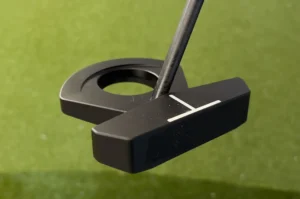Chipping is one of the most important short game skills in golf. Being able to consistently land your chip shots close to the pin for easy pars and up-and-downs is vital to lowering your scores.
One of the biggest challenges in Chipping Distance Control Golf – being able to hit a 20 yard chip versus a 40 yard chip on command. Mastering chipping distance control allows you to attack pins with confidence and avoid costly mistakes.
In this article, we’ll cover Chipping Distance Control Golf to help you gain better command of your chipping distance. Whether you struggle with leaving chips short or flying them long, applying these techniques will sharpen your precision and touch around the greens. Let’s get started!
Chipping Distance Control Golf – Tips
1. Proper Setup
The foundation for solid chipping lies in your setup. These three setup keys will promote consistency and allow you to control distance:
- Grip Down – Grip down an inch or two on the handle to shorten the club. This will reduce how far the ball travels.
- Narrow Stance – Keep your feet shoulder-width apart, if not closer. A wide stance restricts your ability to make a controlled swing.
- Lean Shaft Forward – The shaft should lean towards the target with your body. Don’t stand erect. This encourages clean contact.
2. Contact and Swing
How you strike the ball greatly impacts distance. Use these tips for clean contact and rhythm:
- Hit Down on the Ball – Ensure you make contact on a descending blow to compress the ball.
- Feel the Clubhead – Focus on the weight of the clubhead through impact. Let it fall through the shot.
- Smooth Tempo – A rhythmic motion is more repeatable. Don’t decelerate or get quick through impact.
3. Understand Flight-to-Roll Ratios
The ratio of air time to ground roll is vital for distance control. Here’s a breakdown by club:
- Lob Wedge: 80% flight, 20% roll
- Sand Wedge: 65% flight, 35% roll
- Gap Wedge: 50% flight, 50% roll
- Pitching Wedge: 40% flight, 60% roll
Knowing these ratios for your clubs is key to choosing the right one based on distance.
4. Make Minor Ball Position Adjustments
Moving the ball slightly forward or back in your stance can fine tune distance:
- Forward ball = descending blow = less flight, more roll
- Back ball = more ascending blow = more flight
Adjust in small increments of an inch or two for precision distance control.
5. Develop Touch Through Practice
Improving your chipping feel requires focused practice:
- Chip without a ball to smooth out your motion
- Dial in specific flight-to-roll ratios for each club
- Spend time chipping off real grass around practice greens
With routine practice and laws of ball flight, you’ll develop a intrinsic sense for chipping distance that transfers to the course.
Final Thoughts
The keys to mastering your chipping distance come down to solid fundamentals, understanding variables like bounce and roll, and dedicated practice to hone your touch. Implement these tips and you’ll begin firing darts into greens and saving strokes around the putting surfaces in no time.
Distance control is an art, not a science. Master the basics, commit to improve through repetition, and let feel take over on the course. Your scoring and confidence will surely thank you.
Now it’s time to grab your wedges and a few balls and head to the practice green. Chip away with purpose and chart your progress. Nothing beats experience gained through deliberate practice. You’ve got the blueprint – now it’s time to do the work and build your chipping skill one solid shot at a time.








